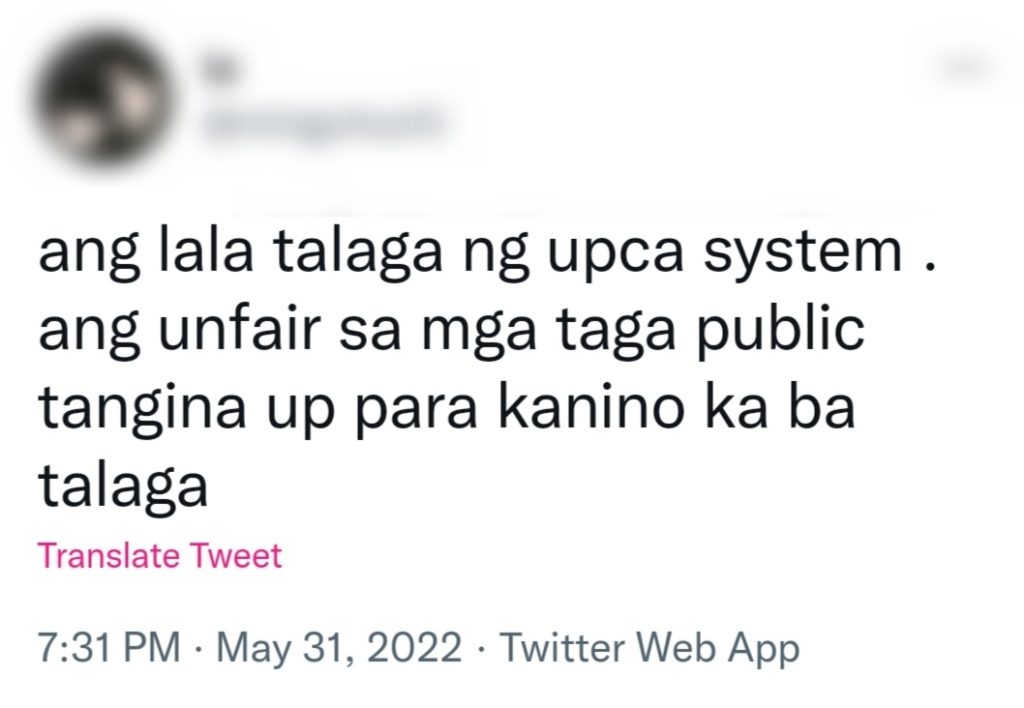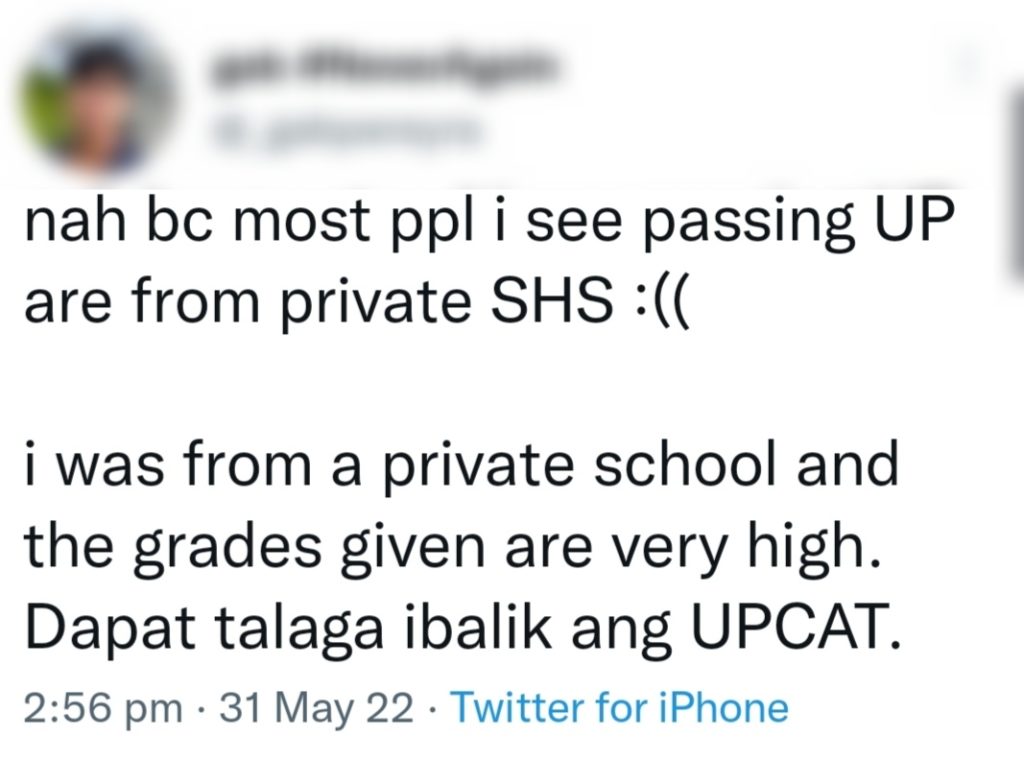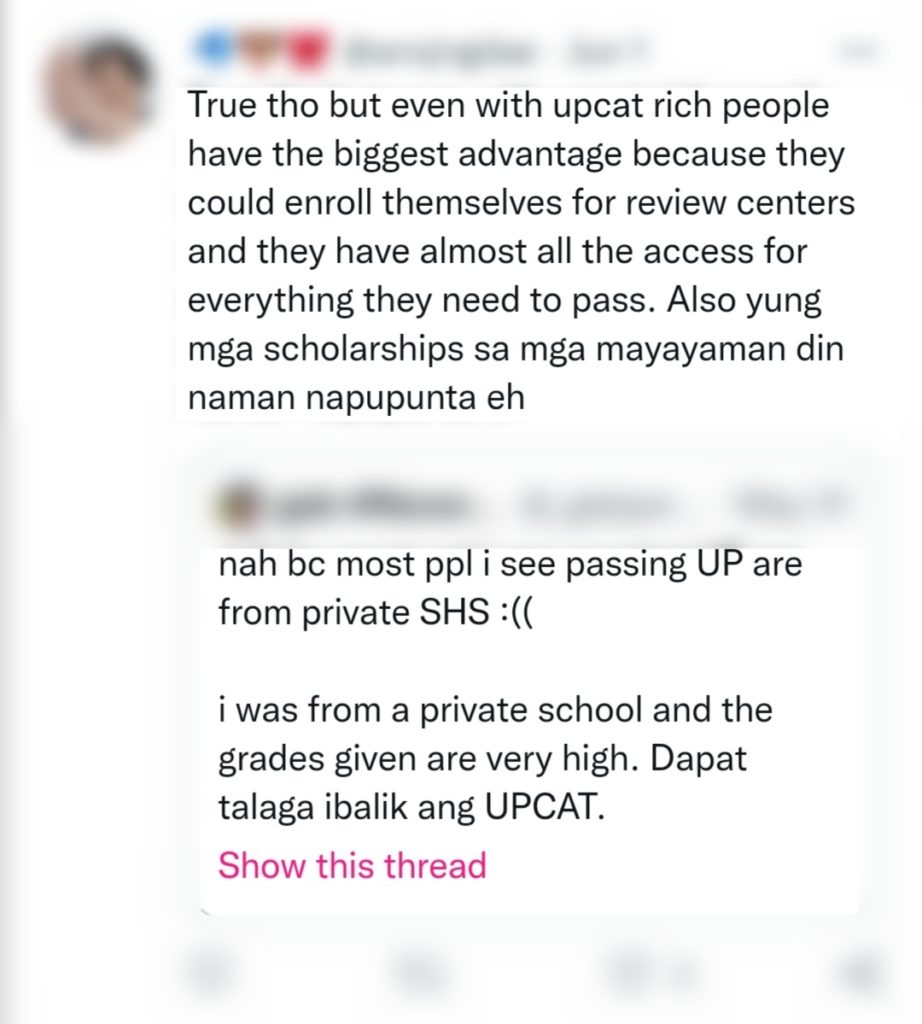With the academic year 2022-2023 fast approaching, the University of the Philippines (UP) has opened its doors to welcome its new batch of Iskos and Iskas into the premier institution.
On May 31, 2022, Tuesday, the country’s national university released the results of the UP College Applications (UPCA) 2022. With over 100,000 applicants, less than 15,000 were accepted into the institution.
And while some took to social media to share the good news and express their excitement, many people were disappointed and pointed out how unfair the admission system is.
DEAR STUDENT DENIED ADMISSION TO UP: Out of more than 100,000 applicants, fewer than 15,000 got in. Budgetary constraints prevent UP from admitting more students. A higher budget would have worked well for you and others. Keep this in mind. You did not fail. The state failed you.
— Danilo Arao (@dannyarao) June 1, 2022

Other users on Twitter were also divided about whether to bring back UP College Admissions Test (UPCAT) instead, arguing that this would thoroughly screen those who are qualified to enter UP. But some argued that the entrance examination still puts some students at a disadvantage.
In 2021, UP announced that it would not administer UPCAT for the second time due to the ongoing pandemic.


On one hand, others tweeted that this kind of admission hinders students’ access to quality education.
It's the annual UPCA/T post:
Hindi tunay na "free" ang quality education hanggang may discrimination na nagaganap sa pagkuha ng kalidad na edukasyon.
Hanggang may UPCA/T at exams para sa mga SUCs, patunay lamang ito na hindi malayo pang matapos ang laban sa
— rob 🫤 (@rrygallardo) June 1, 2022
In a thread, user @ajay_lagrimas said that “neither [the student’s] intellectual or financial capability” shouldn’t be the basis for having access to quality education as others who wanted to pursue college deserved it as well. He then continued to explain that he understood UP’s reasons for doing such kind of admission, and the thousands of students who wanted to enter the premier university.
We also understand why 100K+ student-applicants line up for UP yearly.
Aside from having no tuition fee for undergrads, most of UP’s programs are Centers of Excellence and Development. A poor student aspiring to improve their economic status has higher chance of doing so in UP.
— Ajay Lagrimas 🌻 (@ajay_lagrimas) May 31, 2022
Ajay then called upon the government to “prioritize education over inutile projects” by properly funding UP and supporting state universities and colleges (SUCs), particularly in the provinces, to generate programs that focus on Centers of Excellence and Development.
“In the end, we can’t attain free and quality education if our educ[ation] system remains commercialized, colonial, and anti-democratic,” Ajay tweeted.
He then urged to fight “for a national, scientific, and mass-oriented education” that does not only produce students that can help in nation building, but a quality education that can also be accessed easily and freely with no “payment nor justification” needed.
We must struggle for a national, scientific, and mass-oriented education!
One that’s not only in UP, but can extend from the cities to the regions. One that produces graduates who can contribute to nation building. And one that needs no payment nor justification to be accessed.
— Ajay Lagrimas 🌻 (@ajay_lagrimas) May 31, 2022
Other POP! stories you might like:
Commentary: Are the youth at fault for not knowing history or is it the education system?
8 hilarious tweets from people who will be taking UPCAT this weekend

